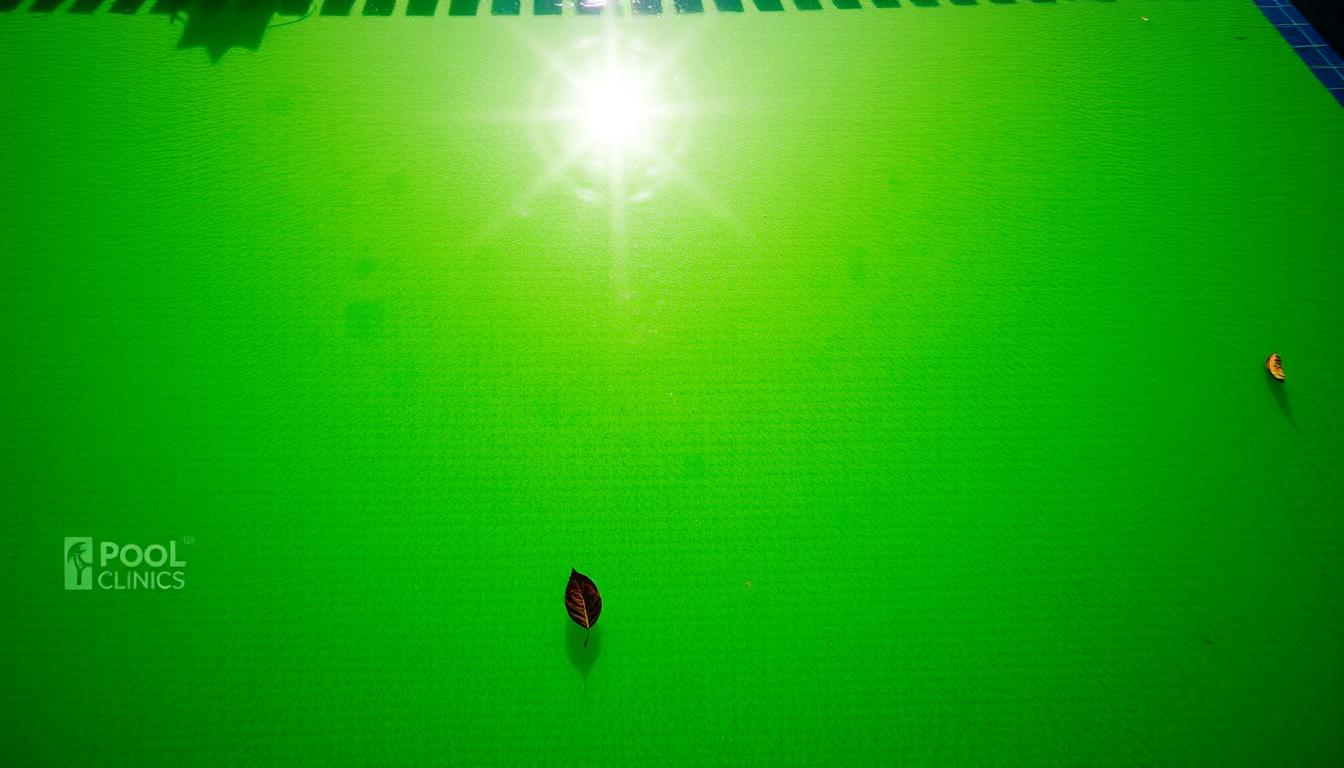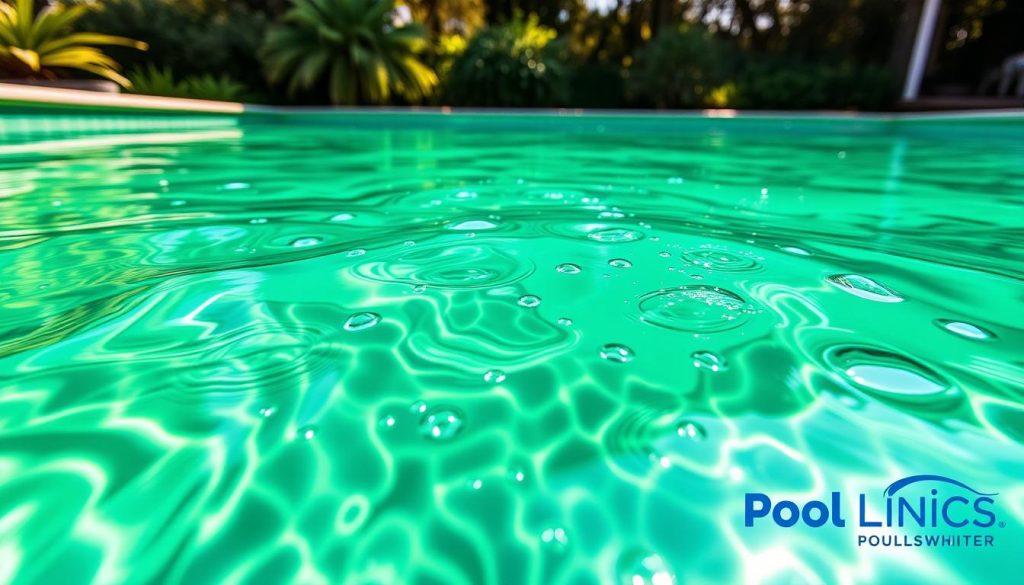
Imagine the disappointment of finding your pool water green instead of inviting. Even after shocking, the water might stay stubbornly green. This isn’t just an eyesore; it can be a health risk too.
Algae is often the main culprit behind green pools. It thrives in warm, sunny conditions and shows a chemical imbalance. Other factors can include pollen, metal oxidation, or low chlorine levels.
High pH or a faulty filter can also cause green water. It’s important to find and fix the root cause. Let’s explore why pools stay green after shocking and how to solve it.
We’ll share quick, practical solutions to clear your pool water. With the right approach, you can say goodbye to green water. Soon, you’ll have a crystal-clear pool to enjoy again.
Key Takeaways
- Algae overgrowth is the primary reason for green pool water, indicating chemical imbalances.
- Pollen, metal oxidation, low chlorine levels, high pH, and inadequate filtration can also contribute to green water.
- Avoid swimming in a green pool until the water is clear, as it may contain harmful bacteria.
- Test phosphate levels and adjust chlorine accordingly to address algae growth effectively.
- Ensure proper filtration, circulation, and consistent pool maintenance to prevent recurring green water issues.
Reasons Why Pool Water Remains Green After Shocking
Green pool water after shocking can be caused by various factors. Understanding these causes is key to treating the issue effectively. Proper maintenance ensures a clean, healthy swimming environment.

Algae Overgrowth: The Primary Culprit
Algae are the main reason for green pool water. These tiny plants thrive in warm, sunlit water. They can multiply quickly, turning clear water green.
Factors that help algae grow include poor filtration and chemical imbalance. External nutrients from fertilizers and decaying leaves also contribute.
To fight algae, maintain good water circulation and run filters regularly. Keeping a balanced chemical composition is also crucial.
- Inadequate filtration, allowing algae to accumulate
- Improper chemical balance, compromising sanitizer effectiveness
- External nutrients from sources like lawn fertilizers and decaying leaves
Pollen and Metal Oxidation Contributing to Green Water
Pollen and metal oxidation can also cause green pool water. Pollen’s greenish-yellow color can tint the water.
Metal parts in the pool can oxidize, releasing materials that affect chemical balance. This imbalance can lead to green water even after shocking.
Pollen and metal oxidation are often overlooked contributors to green pool water, but addressing these factors is crucial for maintaining a crystal-clear swimming environment.
Imbalanced pH and Chlorine Levels
Imbalanced pH and chlorine levels can keep pool water green after shocking. Low chlorine lets algae grow freely. High pH levels above 7.8 make chlorine less effective.
The ideal pH range for chlorine to work best is 7.3 to 7.6. This range helps prevent algae growth.
| Factor | Impact on Green Pool Water |
|---|---|
| Low Chlorine Levels | Allows algae to grow and multiply |
| High pH Levels (>7.8) | Hinders chlorine effectiveness, promoting algae growth |
| Ideal pH Range (7.3-7.6) | Optimizes chlorine efficacy and prevents algae |
Keeping your pool’s chemical balance right is vital for clear water. Test and adjust pH and chlorine levels often. This helps prevent green water and ensures safe swimming.
Solutions for a Green Pool After Shock Treatment
Is your pool still green after shocking? Don’t worry! There are steps to clear green pool water and restore its sparkle. Let’s explore effective ways to eliminate algae and create a clean swimming environment.
Testing Phosphate Levels and Adjusting Chlorine
Start by testing phosphate levels. Algae thrive on phosphates, causing persistent growth even after shocking. If levels are high, adjust chlorine accordingly.
Use 1 pound of chlorine per 10,000 gallons of water for effective shock treatment. Maintain a pH level between 7.3 and 7.6 for optimal chlorine performance against green algae.
Ensuring Proper Filtration and Circulation
Proper filtration and circulation are crucial for eliminating green pool water. Run pool filters for at least eight hours daily to remove pollutants and algae efficiently.
Clean filters regularly based on their type. DE filters need cleaning every 1-3 months, sand filters every 1-4 weeks, and cartridge filters every 2-6 weeks.
Good water circulation is vital for shock treatment success. Clogged filters can hinder the process. In severe cases, you may need to quadruple the shock amount.
Maintaining Consistent Pool Maintenance Practices
Prevent green pool water by maintaining consistent pool care. Regularly monitor and adjust pH and chlorine levels. Ensure proper filtration and circulation to keep water clear.
Add algaecides weekly if chlorine levels are low to prevent algae growth. Address imbalances promptly to avoid costly chemical interventions later.
If green water persists despite your efforts, consult a pool care professional. They can provide expert guidance and specialized tips to restore your pool’s pristine condition.







